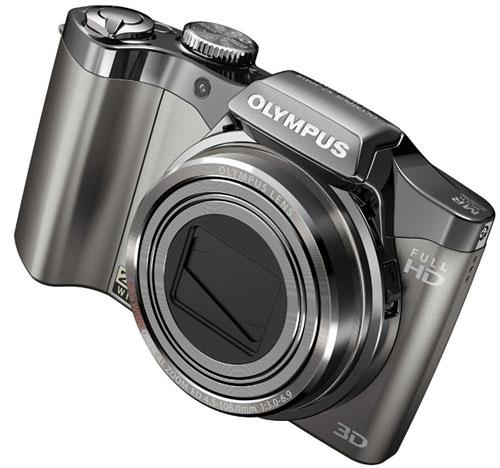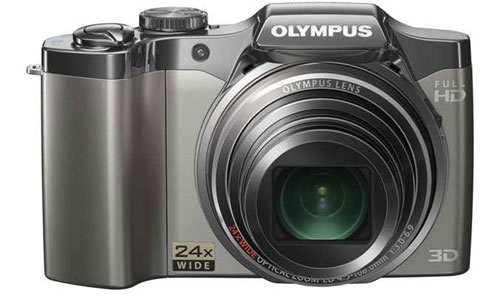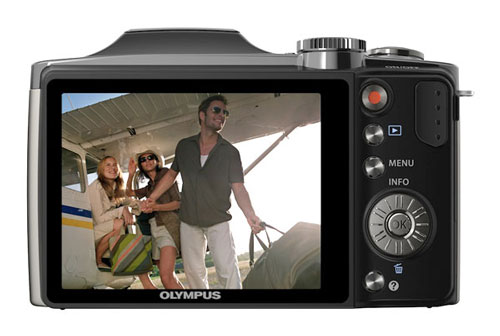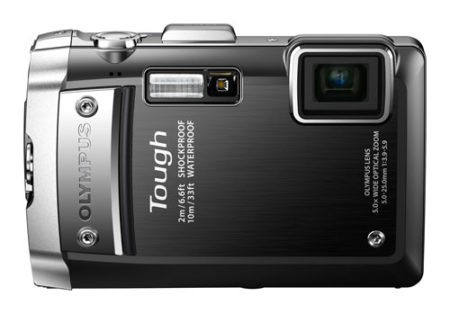
Japan’s Olympus has been releasing all manner of innovative compact cameras in recent months and the most recent, the SZ-30MR, is full of unusual features in an equally unusual body. It has two features particularly deserving of mention: its phenomenal zoom range and the multi-recording function from which the MR in its name derives.
Super zooms are increasingly common and the SZ-30MR is by no means the best in class at 24x (25-600mm equivalent in 35mm terms), but it is the best in class when you consider the size of the camera itself. For something that fits in a pocket, that sort of range is simply staggering, and previously unheard of.
Of course, once you get out towards the long end of the range, it gets tricky to keep steady enough to keep images as crisp as they should be, but the SZ-30MR’s mechanical image stabilisation — whereby the sensor shifts to compensate for shake — combined with its high ISO functionality means it’s entirely possible to get acceptable images in less than ideal lighting conditions.
Like most compacts, the SZ-30MR isn’t a great performer in low light and on the whole it certainly doesn’t have the best image quality we’ve seen from a compact, but for the average user looking for extreme flexibility, and wanting to make prints no larger than 8×10-inches, what it lacks in image quality it makes up for with innovative features.
In keeping with other recent Olympus cameras, the SZ-30MR has a dedicated record/stop button for video on the rear, making it possible to shoot 1080p video on the fly. It also has a microphone on both sides of the lens allowing for stereo sound. Both the dedicated record button and the stereo sound are features we’d like to see on every compact.
Aside from its massive zoom range, the SZ-30MR includes an intriguing shooting mode called “multi record”. Set the function dial to MR and you have the option of shooting two photos, or two videos, or a photo and a video, simultaneously — although some of these options are more useful than others.
In essence, what Olympus has done is harnessed the power of the SZ-30MR’s dual-engine True Pic III+ processor to allow for the crunching of multiple images or videos simultaneously.
For example, you can shoot a video and have it saved as both high- and low-resolution files so you can upload the latter to the Internet while keeping the former for home viewing or posterity.

Similarly, you can apply one of a number of effects to an image and set the SZ-30MR to record an image with the effect applied while also saving an unaltered original.
The multiple still/video option is far less useful as it essentially records a wide and cropped version of the same view, which simply means the camera throws away pixels in the cropped version.
It’s also possible to shoot 3D images on Olympus’s latest offering. After taking the initial image, the user is prompted to realign the camera and a second, somewhat offset image is automatically captured once the user has the correct alignment. The camera then creates the 3D image and saves it as an MPO file, viewable on compatible 3D devices, but not on the camera itself.
Though the fact that the four-way controller button is also a wheel is a great design choice, the use of it for controlling various settings is limited and users are still expected to enter menus, even to change commonly used settings such as exposure compensation or ISO sensitivity.
Olympus really should consider revising its user interface and making better use of the controls on offer. For example, while the help button will appeal to those with minimal experience with cameras, it would be great if it had the option to assign it to alter a specific setting once familiar with the camera.
Unfortunately, despite a programme-shooting mode, there’s no option for full manual control, or aperture or shutter priority modes, making the camera essentially a consumer compact with an enormous zoom range and some nifty gimmicks.
Even if some users will never use it, we’re firmly of the opinion that all cameras should at least offer manual functionality for those who want it.

All digital cameras are capable of offering full manual control, but manufacturers have long since realised that by deliberately omitting the option in lower-end devices — intentionally crippling them and reducing their usefulness in the process — they can ensure consumers that later find they want manual functionality have to fork out again for another device.
The SZ-30MR’s styling is also likely to prove divisive. Some will love its high-gloss top and generally shiny finish; others will decry the lack of texture and grip and the ease with which it shows dirt.
Offering 16 megapixels on a 1/2,3-inch backlit CMOS sensor capable of 1080p video capture, and with a three-inch rear screen with which to compose and view images and videos, the SZ-30MR is in line with its competitors.
The greatest differentiating feature is its enormous zoom, but even this isn’t without its problems. Even indoors, in good daylight conditions, it can take the camera an awfully long time to achieve focus when zoomed, meaning that despite its ability to shoot nine frames a second at full resolution, it’s only really a speedy device in optimal conditions.
Still, if you’re not too demanding a user and want something that offers an incredible range in a single pocket-sized device, the SZ30-MR has a lot to offer. We just wish it had a wider range of manual options for the photographer who wants to advance beyond the limits of happy snaps and allowed for greater customisation of controls.
The SZ-30MR retails for R3 999. — Craig Wilson, TechCentral
- Subscribe to our free daily newsletter
- Follow us on Twitter or on Facebook
- Visit our sister website, SportsCentral (still in beta)



